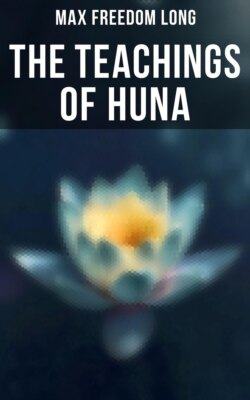Читать книгу The Teachings of Huna - Max Freedom Long - Страница 18
На сайте Литреса книга снята с продажи.
KINDS OF GHOSTS OR SPIRITS LISTED ACCORDING TO THE KAHUNA LORE.
Оглавление1. The ordinary normal spirit of one deceased. This spirit is made up of a subconscious and a conscious spirit, as in life. It thinks and remembers like any ordinary normal living man. It uses the same forces.
2. The subconscious spirit of a man, cut off from its conscious companion by some accident or illness before or after death. This spirit remembers very well indeed but is illogical, having only animal-like deductive reason. It responds to hypnotic suggestion. It is like a child and is often a playful "poltergeist" or noisy ghost. It loves to attend seances and make tables tip. It tries to answer questions, and usually gives such answers as make it appear to be a liar or worse. It loves to imitate one's deceased relatives.
3. The conscious mind spirit of man, cut off from its companion subconscious spirit before or after physical death. This spirit cannot remember, therefore it is a nearly helpless wraith, wandering about aimlessly, sometimes making its presence known, sometimes seen psychically, but acting the part of the true "lost soul" until rescued eventually and paired off again with a subconscious spirit who can furnish it with remembering powers—often with a set of memories of a former life in which the rescued conscious spirit or uhane had no part.
4. Spirits of the superconscious order, including what may be called "nature spirits or group souls," after the Theosophical terminology. Only vague information is given as to this class of spirits, although it is concluded that they frequently take a hand in the activities of the two lower spirits, the unihipili and uhane, helping them to do things of a spectacular nature at times.
Not until the rediscovery of the kahuna system of psychology have we had a remotely plausible and satisfying explanation of the phenomena of dual and multiple personality (or of obsessional or split-personality types of insanity).
It is exciting, therefore, to see how the old system fits in with what we know of such cases. Let me present some standard data:
